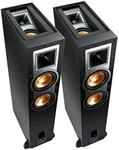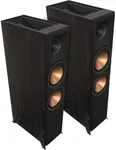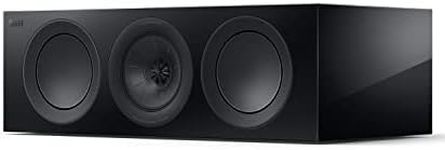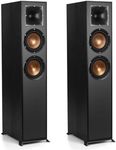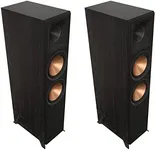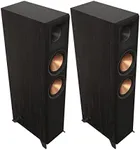Buying Guide for the Best Floorstanding Speakers
Choosing the right floorstanding speakers can significantly enhance your audio experience, whether you're listening to music, watching movies, or playing games. These speakers are designed to deliver powerful, high-quality sound and can be a great addition to your home audio setup. To make the best choice, it's important to understand the key specifications and how they relate to your needs and preferences.Frequency ResponseFrequency response refers to the range of sound frequencies a speaker can reproduce, typically measured in Hertz (Hz). This spec is important because it determines how well the speaker can handle different types of audio, from deep bass to high treble. A wider frequency response range means the speaker can produce a more complete and accurate sound. For general listening, a range of 20Hz to 20kHz is ideal, as it covers the full spectrum of human hearing. If you enjoy bass-heavy music or movies, look for speakers with a lower minimum frequency.
SensitivitySensitivity measures how effectively a speaker converts power into sound, expressed in decibels (dB). Higher sensitivity means the speaker can produce louder sound with less power. This spec is crucial if you want to achieve high volume levels without requiring a powerful amplifier. Sensitivity values typically range from 85dB to 100dB. If you have a smaller amplifier or want to ensure your speakers can get loud without distortion, aim for higher sensitivity ratings.
ImpedanceImpedance is the resistance a speaker offers to the electrical current from the amplifier, measured in ohms. This spec is important because it affects how much power the speaker needs and how it interacts with your amplifier. Common impedance values are 4, 6, and 8 ohms. Most home audio systems are designed to work with 8-ohm speakers, but if you have a high-powered amplifier, lower impedance speakers can be a good match. Ensure your amplifier can handle the impedance of the speakers you choose to avoid damage or poor performance.
Power HandlingPower handling indicates the maximum amount of power a speaker can handle, measured in watts. This spec is important to ensure your speakers can handle the output from your amplifier without being damaged. There are two values to consider: RMS (continuous power) and peak power. RMS is the amount of power the speaker can handle continuously, while peak power is the maximum it can handle in short bursts. For everyday use, focus on RMS power handling. Match the power handling of the speakers to your amplifier's output to avoid overloading the speakers.
Driver ConfigurationDriver configuration refers to the arrangement and types of drivers (woofers, tweeters, midrange) in the speaker. This spec is important because different drivers handle different frequency ranges, affecting the overall sound quality. Common configurations include 2-way (woofer and tweeter) and 3-way (woofer, midrange, and tweeter). If you want a balanced sound with clear highs, mids, and lows, consider a 3-way configuration. For general listening, a 2-way configuration can be sufficient and more cost-effective.
Cabinet DesignCabinet design refers to the physical structure and materials used in the speaker's enclosure. This spec is important because it affects the speaker's sound quality and durability. A well-designed cabinet can reduce unwanted vibrations and resonance, leading to clearer sound. Look for cabinets made from high-quality materials like MDF or hardwood, and consider features like internal bracing and damping. If aesthetics are important, choose a design that complements your room decor, but prioritize sound quality and build integrity.
